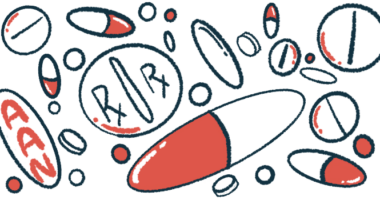Alterations In Nerve–Muscle Contacts Are Detected At Early-Stage Disease in ALS Patients

A research team from Pitié–Salpêtrière Hospital in Paris found major structural alterations of the neuromuscular junctions (NMJs) in early stage Amyotrophic Lateral Sclerosis (ALS) patients. The study entitled “Endplate denervation correlates with Nogo-A muscle expression in amyotrophic lateral sclerosis patients” was published April 2015 in Annals of Clinical and Translational Neurology.
ALS affects motor neurons responsible for voluntary muscle contraction. In the United States, two per 100,000 people have ALS, with only five percent surviving after 20 years of being diagnosed. The cause of the disease is unknown, with only 10% familial cases, among which 20% are due to a mutation in the superoxide dismutase (SOD1) gene.
At the NMJ, the terminal boutons of the motor neuron release the neurotransmitter acetycoline (ACh) that binds to the nicotinic acetylcholine receptors (nAChRs) on the cell membrane of the muscle cell. This interaction establishes a neuromuscular synapse that leads to muscle contraction. Mouse models of ALS show a loss of these neuromuscular synapses before other pathological changes are detected in the motor neurons. In this study, researchers investigated the NMJs of nine patients using higher resolution microscopy such as confocal and electron microscopy. They analyzed the NMJs obtained by muscle biopsy of early-stage ALS patients and long-term survivors and they found structural alterations of the synapses in NMJs of all patients. The researchers observed a reduced enervation and an abnormal distribution of AChRs that can influence the stabilization of the neuromuscular synapse.
The NMJ loss of innervation in ALS patients correlated with increased muscle expression of the Nogo-A protein, an inhibitor of neuronal growth found overexpressed in the skeletal muscle of a mouse model of ALS.
Overall, the study shows that major morphological defects are present in NMJs of patients even in those who were diagnosed just 10 months before. Muscle Nogo-A overexpression may contribute to the pathology of ALS but the specific mechanism that causes NMJ denervation still needs to be elucidated. The NMJ alterations may lead to functional motor impairment and preventing this neurodegenerative process could be therapeutic in ALS. According to this and other studies, Nogo-A is a strong candidate to be targeted and therefore there is an undergoing phase II study with a humanized monoclonal antibody against Nogo-A in ALS patients.






